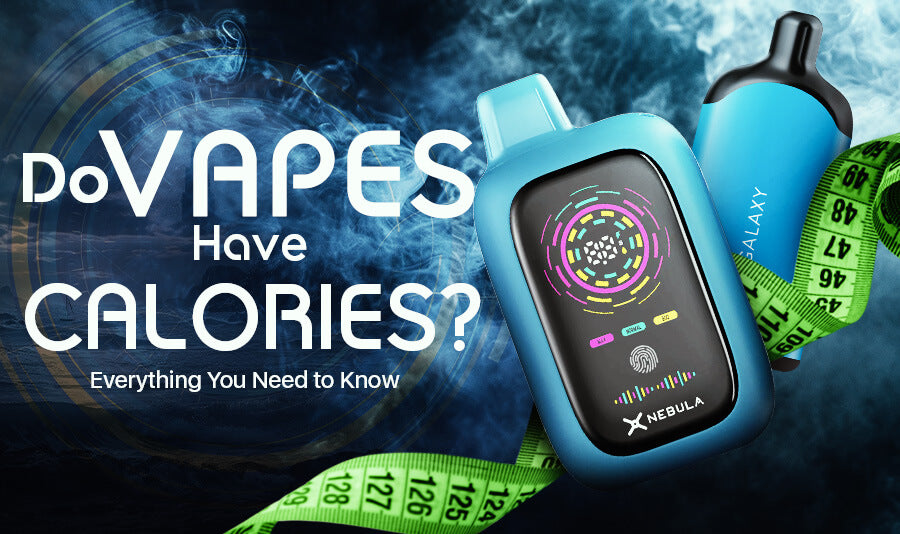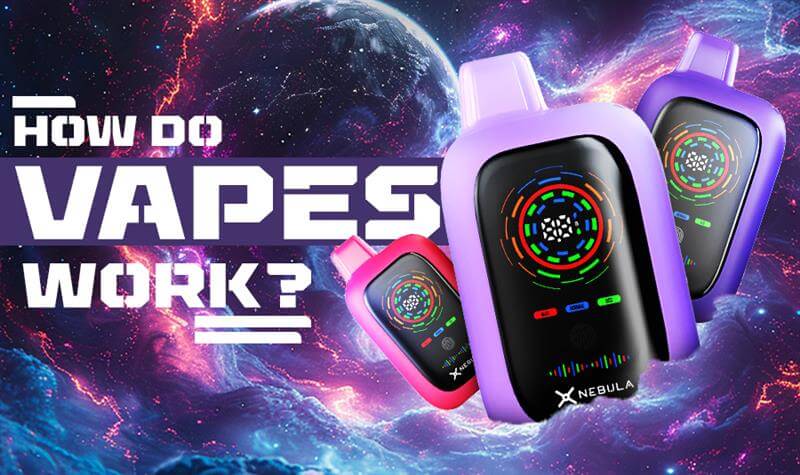Do Vapes Have Calories? Everything You Need to Know

Vaping has become an incredibly popular alternative to smoking in recent years, with a variety of flavors and devices catering to different preferences. One question that pops up from time to time is: Do vapes have calories? For those who are conscious about their calorie intake or just curious, this topic sheds light on what you’re actually inhaling and whether you should be concerned about those extra calories from your vape.
What’s Inside a Vape?

Before diving into whether vapes have calories, it’s important to understand what ingredients are in the e-liquids you’re vaping. The core ingredients of most vape juices are:
- Propylene Glycol (PG): This is a synthetic liquid used to create a smoother vaping experience. It helps to produce the "throat hit" that many people associate with smoking. It’s found in a variety of everyday products, including food and cosmetics.
- Vegetable Glycerin (VG): This is a natural, plant-based substance that adds thickness to the vape juice, making it vaporize more slowly and produce larger clouds. Like PG, it’s commonly found in food and cosmetics.
- Nicotine: This addictive substance is the primary reason people use vape devices, especially if they are transitioning away from smoking cigarettes. However, not all e-liquids contain nicotine.
- Flavorings: The flavorings give e-liquid its taste and can range from fruity flavors like strawberry to more complex blends like black ice vape.
So, do any of these ingredients have calories? Technically, yes—VG and flavorings contain small amounts of calories. However, whether this impacts your calorie intake during vaping is a bit more nuanced.
Do Vapes Contain Calories?
While it might sound surprising, yes, vapes do contain calories, but here’s the good news: they’re not something you need to worry about.
Vegetable glycerin (VG), one of the primary ingredients in vape juice, has calories similar to sugar alcohols found in foods. When ingested, VG does contribute to calorie intake, but the way it is consumed through vaping is different. Vaping involves inhalation, not ingestion. Because of this, your body absorbs the VG vapor differently than if you were to eat it.
Flavorings in vape juices may also have trace amounts of calories. These are typically food-grade flavors and, again, the caloric content is minuscule. However, the main point to remember is that even though there are small amounts of calories in e-liquids, you’re not physically consuming them the same way you would food or drinks.
Does Vaping Add to Your Daily Caloric Intake?
If you’re someone who counts calories religiously, you might wonder if those small traces of calories add up. Technically, when you vape, your body can absorb a minimal amount of these calories, but the amount is so small that it’s almost negligible.
Most experts agree that the calorie impact of vaping is so low that it wouldn’t make a noticeable difference in your overall daily intake. Even if you vape regularly, it’s extremely unlikely that the amount of VG or flavorings inhaled would lead to any significant calorie intake. So, while vapes do contain calories, they’re not enough to worry about when it comes to your diet.
For example, if you’re enjoying your favorite **mint ice vape**, you’d have to vape an absurd amount just to equal the caloric intake of something as small as a single calorie in food. For those concerned about weight gain, vaping is not a source of significant caloric intake.
How Does Vaping Compare to Eating or Drinking?
Let’s put things into perspective. When you eat or drink something, your body metabolizes it, breaking down the calories and using them for energy or storing them as fat. In contrast, when you vape, most of the ingredients are exhaled, not ingested.
VG, the component that does have calories, is mostly vaporized and released into the air rather than absorbed into your bloodstream in any significant amount. It’s similar to how when you boil water, you aren’t consuming the water that evaporates—it just dissipates into the air. This is why the tiny amount of calories in e-liquids doesn’t pose a risk to your waistline.
Moreover, PG, another primary ingredient in vape juice, is virtually calorie-free, and any calories from flavorings are too minimal to affect your diet. So, whether you’re indulging in sweet dessert flavors or something more refreshing like a **mint ice vape**, you can vape without worrying about hidden calories adding up.
Vaping vs. Smoking: What’s the Difference in Caloric Impact?
If you’re switching from smoking to vaping and wondering about the caloric difference, vaping actually has a much lower caloric impact than smoking. Cigarettes contain chemicals and additives that might contribute to weight gain or changes in metabolism, but vaping doesn’t have the same impact.
While smoking has been associated with increased calorie burn (due to nicotine's effect on metabolism), vaping tends to offer a more controlled nicotine intake without the harmful side effects of smoking. If calorie intake is a factor in your decision to switch, rest assured that vaping is a low-calorie alternative.
Should You Be Concerned About Calories in Vapes?
The short answer: no. While it’s technically true that vaping liquids contain small traces of calories from VG and flavorings, the amount is so small that it won’t have any real impact on your calorie intake or weight.
If you're purchasing disposable vapes for sale online, keep in mind that the primary ingredients of vape juice—VG and PG—are widely used in food products and deemed safe for consumption by regulatory agencies. The trace amounts of calories they contain are not significant enough to make a dent in your daily calorie count.
Final Thoughts
So, do vapes have calories? Yes, but the amount is so small that it’s practically non-existent in terms of affecting your health or calorie intake. Whether you’re enjoying a fruity blend or a black ice vape, there’s no need to worry about it adding any extra pounds to your waistline.
Vaping remains a popular alternative to smoking, and while it does contain calories, it’s such a small amount that it won’t interfere with your diet or fitness goals. So go ahead and indulge in your favorite flavors guilt-free!
Must Read: Can a Disposable Vape be Detected in a Metal Detector?







